#snehapana
Text
Panchakarma Therapy: Detox Your Body, Awaken Your Soul
Have you ever felt overwhelmed by the constant influx of toxins, both physical and emotional, that modern life throws our way? The answer lies in the ancient practice of panchakarma therapy, an Ayurvedic detox that promises to cleanse your body, mind and spirit. Derived from the Sanskrit words meaning "five actions," Panchakarma employs five therapeutic techniques to rid the body of deep-seated toxins (ama) and restore balance. Explore the transformative power of Vamana, Virechana, Basti, Nasya and Raktamokshana as they cleanse and rejuvenate different aspects of your being. Discover the preparatory phase, Purvakarma, essential for loosening toxins, and find reputable Panchakarma centers for guided treatment. Experience the multi-day process tailored to your individual constitution, and embrace the renewed vitality post-treatment. From improved digestion to enhanced emotional well-being, Panchakarma offers a holistic approach to wellness. For long-term well-being, become knowledgeable about its safety precautions, dietary recommendations and adoption of the Ayurvedic lifestyle.
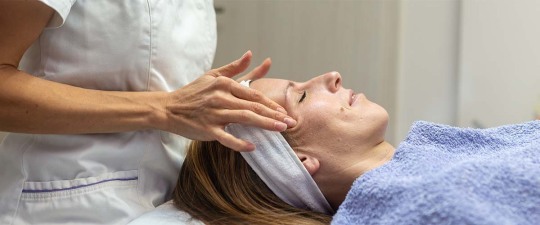
What is Panchakarma?
Panchakarma is an ancient Ayurvedic detoxification process that has been practiced for centuries in India. The word "panchakarma" literally translates to "five actions" or "five procedures," referring to the five therapeutic techniques used to eliminate deep-rooted toxins (ama) from the body.
The Five Karmas: Unlocking the Path to Purification
At the heart of panchakarma therapy lies the five karmas, each designed to cleanse and rejuvenate different aspects of your being.
1. Vamana: Therapeutic Vomiting
This karma involves the consumption of medicated preparations that induce controlled vomiting, effectively expelling toxins from the stomach and respiratory system.
2. Virechana: Purgation Therapy
Through the ingestion of herbal concoctions, virechana stimulates the elimination of toxins from the small intestine and colon, promoting optimal digestive health.
3. Basti: Enema Therapy
Basti, or medicated enema therapy, targets the accumulation of toxins in the colon and rectum, providing a deep cleanse and relief from various ailments.
4. Nasya: Nasal Administration
This karma involves the administration of herbal oils and powders through the nasal passage, clearing toxins from the head, neck and sinus regions.
5. Raktamokshana: Detoxifying Bloodletting
In this procedure, small amounts of blood are removed from specific points on the body, effectively eliminating toxins and improving overall circulation.
Preparing for the Journey: The Purvakarma
Before embarking on the panchakarma, a preparatory phase known as purvakarma is essential. This involves various therapies, such as oil massages (abhyanga), herbal steam (swedana) and internal oleation (snehapana), which help to loosen and mobilize toxins for efficient elimination.
Finding a Panchakarma Centre Near You
To experience the full benefits of panchakarma, it's crucial to seek guidance from qualified Ayurvedic practitioners. Consider searching for a reputable "panchakarma centre near me" that adheres to traditional principles and employs experienced therapists.

The Panchakarma Experience
The panchakarma treatment is a multi-day process, typically lasting from seven to twenty-one days, depending on your individual needs. During this time, you'll undergo a series of therapies, each tailored to your specific constitution (dosha) and imbalances.
Imagine a serene environment where you can disconnect from the stresses of daily life and immerse yourself in a transformative journey. The rhythmic strokes of a warm oil massage (abhyanga) prepare your body for the cleansing process, while the soothing aromas of herbs and spices transport you to a state of deep relaxation.
Post-Panchakarma: Embracing a Renewed Life
After completing the panchakarma, you'll likely experience a profound sense of lightness and vitality. This is the perfect time to adopt healthy lifestyle practices, such as a balanced diet, regular exercise and stress management techniques, to sustain the benefits of your detoxification.
Benefits of Panchakarma Therapy
The transformative power of panchakarma therapy extends far beyond mere physical cleansing. These are just a few of the amazing advantages you can anticipate:
1. Improved Digestion and Metabolism
By eliminating accumulated toxins and restoring balance in the digestive system, panchakarma can alleviate issues like constipation, bloating and indigestion, leading to improved nutrient absorption and a revitalized metabolism.
2. Enhanced Emotional Well-being
The interdependence of the body, mind and spirit is acknowledged by Ayurveda. Panchakarma can help release emotional toxins, reducing stress, anxiety and negative thought patterns, ultimately promoting a greater sense of inner peace and emotional stability.
3. Boosted Immunity
With the removal of toxins and the restoration of bodily balance, panchakarma can strengthen your immune system, making you more resilient against various infections and illnesses.
4. Relief from Chronic Conditions
Many individuals seek panchakarma treatments as a holistic approach to managing chronic conditions such as arthritis, autoimmune disorders, skin issues and even neurological conditions like Parkinson's disease.
Is Panchakarma Safe for Everyone?
While panchakarma, is generally considered safe when performed under the guidance of experienced practitioners, it may not be suitable for everyone. Certain individuals, such as pregnant women, those with severe medical conditions, or those on certain medications, should consult with an Ayurvedic doctor before undergoing the treatment.
The Role of Diet in Panchakarma
Diet plays a crucial role in the success of panchakarma therapy. During the treatment, you'll be advised to follow a specific diet, typically consisting of light, easily digestible foods that support the detoxification process. After the therapy, you'll transition to a nutritious, balanced diet tailored to your individual constitution (dosha) to maintain the benefits achieved.
Conclusion
Panchakarma treatment stands as a beacon of holistic healing, offering a profound journey towards rejuvenation and well-being. Through its meticulous detoxification process and personalized treatments, Panchakarma addresses the root cause of ailments, promoting harmony and vitality on all levels—physical, mental and spiritual. Embrace this ancient Ayurvedic practice as a gateway to lasting wellness, and embark on a transformative journey towards a healthier, happier you.
FAQs
1. What is the typical duration of a panchakarma treatment?
The duration of panchakarma therapy can vary from seven to twenty-one days, depending on your individual needs and the severity of imbalances.
2. Is panchakarma painful or uncomfortable?
While some procedures may cause mild discomfort, panchakarma is generally a gentle and relaxing experience when performed by skilled practitioners. Any discomfort should be temporary and manageable.
3. Can panchakarma help with weight loss?
Yes, panchakarma can aid in weight loss by improving digestion, metabolism, and eliminating toxins that may contribute to weight gain.
4. Can I continue my medications during Panchakarma treatment?
It's essential to inform your Ayurvedic practitioner about any medications or supplements you are taking before starting Panchakarma treatment. They can advise you on whether to continue or adjust your medications during the treatment process.
5. Is Panchakarma suitable for everyone?
While Panchakarma offers profound benefits for many individuals, it's essential to consult with an Ayurvedic practitioner to determine if it's suitable for your specific needs and health conditions.
0 notes
Text
MOOD SWINGS

MOOD SWINGS is a sudden or intense change in a person's emotional state. During a mood swing , an individual may quickly switch from feeling happy to feeling sad , irritable or angry.
CAUSES
Hormonal changes
Stress
Mental health conditions like depression and anxiety , bipolar disorder.
Environmental factors
Genetics
SYMPTOMS
Rapid changes in mood : Fluctuations between feeling happy , sad , irritable
Intense emotions : feeling extremely happy one moment and deeply sad the next.
Irritability : being easily agitated ,annoyed
Changes in sleep patterns : difficulty falling asleep or sleeping too much.
Difficulty concentrating : trouble focusing on tasks or thoughts due to intrusive mood fluctuations.
Urge to increase alcohol consumption
Lethargy
MOOD SWINGS ACCODING TO AYURVEDA
According to ayurveda mood changes are a part of "Mansik Rogas" (disorders of mind) and are the result of not only imbalance between the "Mansik Dosha"(Mental imbalance) i.e satva , rajas and tamas but also the imbalance of vata , pitta and kapha doshas.
AYURVEDIC MANEGMENT FOR MOOD SWINGS
The treatment is to balance Doshas and normalize the production of neurotransmitters.
Rasayana Therapy
Medhya drugs
Snehapana
Swedana
Abhyanga
Panchkarma therapy
Herbs
Ashwagandha
Arjun
Brahmi
Jatamansi
Guduchi
Shankhpushpi
Bhringraj
Shatavari
Bala
Haritaki
Amalaki
DO'S AND DONT'S IN MOOD SWINGS
Trying to live in a nice and happy environment.
Keep yourself busy with some work.
Share your feelings with someone
Meditations
Exercise
Limit the intake of white sugar and its products , coffee etc.
Vegetables , dry fruits , sprouts , nuts etc.
Avoid intake of alcohol and drugs.
Yoga Asana
Hastpadasana
Surya namaskara
Janu sirsasana
Balasana
Sukhasana
Savasana
AYURVEDA TREATMENT FOR MOOD SWING
1. Stress Care Tablet
2. Brain Relaxant Churna
3. Nerve Plus Tablet
0 notes
Text
Rheumatoid Arthritis treatment in Kerala - Dheemahi Kumarakom
Exploring Ayurvedic Solutions for Rheumatoid Arthritis in Kerala
Understanding Rheumatoid Arthritis (RA) in Ayurveda
Rheumatoid Arthritis (RA) is an autoimmune condition where the body's defense system mistakenly attacks joints, causing swelling and pain. In Ayurveda, this correlates with "amavata," characterized by elevated vata aggravated by metabolic toxins impacting the joints. Shared symptoms include joint pain, stiffness, and inflammation.
Contributing Lifestyle Factors
Several lifestyle factors, such as Virudhahara (incompatible food combinations), Mandagni (weak digestion), and Snigdhahara Bhojanam (consumption of oily foods), can contribute to the formation of ama and exacerbate amavata.
Recognizing Cardinal Symptoms
Key symptoms of amavata include Sandhi shoola (joint pain), Sandhi shotha (joint swelling), Stabdhata (joint stiffness), Sparshashatva (joint tenderness), and Sashabda sandhi (crepitation in joints).
General Signs and Symptoms
Amavata manifests as Angamarda (bodyache), Aruchi (loss of appetite), Trishna (excessive thirst), Alasya (lethargy), Gaurava (heaviness), Jvara (fever), and Apaka (indigestion).
Ayurvedic Management Strategies
Shamana Chikitsa (Conservative Treatment)
Langhana: Fasting or depletion to eliminate accumulated ama.
Deepana: Boosting digestive fire (agni) to improve digestion.
Pachana: Therapies aiding digestion to eliminate undigested material.
Shodhana Chikitsa (Biological Purification)
Snehapana: Consumption of medicated oils or ghee for internal lubrication.
Swedana: Fomentation or sweating therapies to open channels and eliminate toxins.
Virechana: Purgation therapy using natural laxatives.
Basti: Enema therapy to remove doshas and toxins.
External Ayurvedic Treatments
Podikizhi: Poultices with herbal powders for joint pain and inflammation.
Valuka Swedam: Sand fomentation to improve blood circulation.
Dhanyamla Dhara: Application of warm herbal decoction to reduce inflammation.
Naranga Kizhi: Herbal poultices for pain relief and improved mobility.
Lepanam: Application of medicated herbal pastes to reduce pain and inflammation.
Upnaham: Application of medicated bandages for joint support.
Benefits of Choosing Kerala for Rheumatoid Arthritis Treatment
Kerala is renowned for authentic Ayurvedic treatments and Panchakarma therapies. Dheemahi Ayurvedic Village in Kerala stands out for its specialized approach, utilizing natural surroundings, a serene atmosphere, and expert practitioners.
Dheemahi Ayurvedic Village: Premier Rheumatoid Arthritis Treatment Center
Dheemahi offers a holistic approach, combining curative therapies, Panchakarma, and personalized treatment plans. Expert doctors provide daily consultations, ensuring comprehensive care and supervision throughout the treatment.
Personalized Care at Dheemahi Ayurveda
Dheemahi prioritizes patient health through a rich Ayurvedic tradition. Routine follow-ups and doctor supervision in every therapy ensure reliability and effectiveness, particularly for chronic conditions.
In Conclusion
Rheumatoid Arthritis treatment in Kerala, exemplified by Dheemahi, provides a comprehensive solution for individuals seeking relief from rheumatoid arthritis. The holistic approach, traditional therapies, and expert care contribute to healing and overall well-being. Opting for Dheemahi ensures a therapeutic environment focused on health and vitality.
0 notes
Text
Myasthenia Gravis – An Autoimmune Disease in Ayurvedic perspective
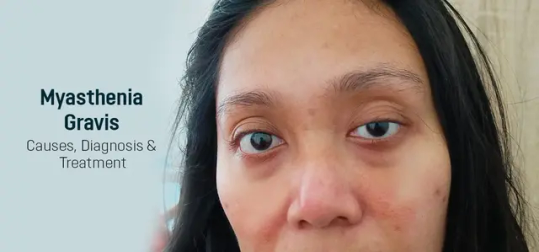
Myasthenia gravis is a neuromuscular disorder that weakens the skeletal muscles (the muscles your body uses for movement). Myasthenia Gravisis a Latin and Greek word in origin, which means grave and severe muscle weakness. This disease is more common in women younger than 40 and men older than 60.
Due to this condition, the muscles feel weak and tired, especially the ones you use for things like opening your eyes, speaking clearly, and doing everyday activities like climbing stairs or lifting things. Even though there’s no cure for myasthenia gravis, there are treatments available in Ayurveda to help you manage these problems.
Sagging of the eyelids, double vision, impaired speech, difficulty in swallowing and chewing, altered facial expressions, forced respiration, and weakness of the neck, arms, and legs are some of the most prominent Myasthenia Gravis symptoms.
Signs and Symptoms of Myasthenia Gravis
Muscle Weakness: The primary and hallmark symptom of Myasthenia Gravis is muscle weakness. This weakness is distinctive in that it typically worsens with muscle use and improves with rest.
Variable Muscle Involvement: MG can affect different muscle groups in the body. It often targets specific muscles more than others, leading to various manifestations.
Ocular Symptoms: MG commonly affects the muscles around the eyes, resulting in:
(a)Droopy Eyelids (Ptosis): One or both eyelids may droop, impairing vision.
(b)Double Vision (Diplopia): Seeing two images of a single object due to impaired eye muscle coordination.
Facial and Throat Muscle Symptoms: MG can involve facial and throat muscles, leading to:
(a) Difficulty Chewing: Weakness in the jaw muscles can make chewing difficult.
(b) Trouble Speaking: Weakness in facial muscles can affect speech articulation.
(c) Swallowing Difficulties: Weakened throat muscles may lead to swallowing problems.
(d) Crooked Face: Facial muscle weakness may cause facial asymmetry.
Neck Muscle Weakness: MG can affect the muscles in the neck, resulting in:
(a)Difficulty Holding the Head Up: Weakened neck muscles can make it challenging to support the head’s weight.
Leg Muscle Involvement: The condition may also impact the muscles in the legs, leading to:
(a)Difficulty Walking: Weakened leg muscles can make walking and moving around challenging.
(b)Difficulty Standing: Prolonged standing may become difficult due to muscle fatigue.
Ayurvedic Remedies for Myasthenia Gravis
According to Ayurveda, Myasthenia Gravis is caused due to vitiation of Vata and Kapha Dosha at the site of muscles. It is also caused by to impairment of the metabolic fire- Agni, which leads to the accumulation of ama in the body. Thus suppression of Agni leads to the aggravation of Doshas.
Ayurveda offers a holistic approach to managing Myasthenia gravis, with several natural treatments that are believed to be beneficial:
Ashwagandha: This herbal adaptogen is used to reduce stress and improve overall health by strengthening the immune system, potentially alleviating the symptoms of myasthenia gravis.
Panchakarma: Panchakarma is an Ayurvedic detoxification therapy consisting of various treatments designed to cleanse the body and eliminate toxins. It is thought to be helpful for various health issues, including neurological disorders.
Yoga and Pranayama– This helps to reduce stress and boost Ojas. It also helps to improve neural networks and bring back communication with muscles thereby enhancing muscle strength.
Ayurvedic therapies for Myasthenia gravis focus on enhancing muscle strength. These therapies include Snehapana (internal use of medicated ghee), Swedana (steam therapy), Nasya (nasal drops), and Vasti (enema). Additionally, applying medicated pastes (Lepana) is recommended to improve muscle function. It is then followed by Rasayana therapy (boosting immunity and providing nourishment to the tissues). Making appropriate dietary and lifestyle adjustments can also help slow down the progression of the disease.
Importance of Diet
The importance of diet in managing myasthenia gravis cannot be overstated. Since individuals with this condition often experience difficulty in chewing and swallowing food, it is advisable to opt for a diet that is either semi-solid or liquid in consistency, as these types of foods require less effort during chewing and swallowing.
However, it’s crucial to ensure that the chosen diet remains nutritious and balanced to support overall health and well-being. Incorporating a variety of nutrient-rich foods into your diet can provide essential vitamins and minerals that are beneficial for managing myasthenia gravis and maintaining your strength.
Ayurclinic point of view
At Ayurclinic, we initiate treatment with a comprehensive assessment, considering the patient’s unique constitution, underlying imbalances, and the severity of the condition. This personalized approach helps determine the most effective Ayurvedic therapies and herbal formulations to address the root causes of Myasthenia Gravis and manage its symptoms. We also recommend Panchakarma therapies, dietary adjustments, and lifestyle modifications tailored to the individual’s needs. Our expert Ayurveda practitioners closely monitor progress and make necessary adjustments to treatment plans. With a focus on natural healing and restoring the body’s balance, we offer the best Ayurveda treatments for Myasthenia Gravis in Melbourne, providing patients with holistic care and long-lasting relief.
Conclusion
In conclusion, living with Myasthenia Gravis can present various challenges due to muscle weakness that affects everyday activities. While there is no cure for this condition, Ayurveda offers a holistic approach to managing its symptoms and improving overall quality of life.
With a commitment to natural healing and holistic care, Ayurclinic Melbourne remains the top choice for those seeking relief from Myasthenia Gravis and a better quality of life.
Choose Ayurveda to choose a better life! Book an appointment with us to know more about Myasthenia Gravis and treatment procedures.
#ayurveda#ayurveda medicine#ayurveda therapy#health and wellness#eye health#eye care#muscular#neurology#clinic#melbourne#ayurveda doctor#ayurveda clinic
0 notes
Text
Panchakarma Treatment for Weight Loss
Introduction: The Natural Path to Shedding Pounds
Are you tired of the endless cycle of diets and exercise routines that promise weight loss but often fall short? What if there was a holistic approach that not only helps you shed those extra pounds but also rejuvenates your body and mind? Enter Panchakarma treatment, a time-honored Ayurvedic therapy that offers a unique and effective way to achieve weight loss while promoting overall well-being. In this article, we delve into the fascinating world of Panchakarma and how it can be your ultimate solution to achieving your weight loss goals.

Understanding Panchakarma: A Deeper Div
Panchakarma, derived from the Sanskrit words "pancha" (meaning five) and "karma" (meaning action), is a comprehensive Ayurvedic detoxification and rejuvenation therapy. It focuses on balancing the three doshas – Vata, Pitta, and Kapha – and aims to remove toxins from the body, restore inner harmony, and enhance vitality. While Panchakarma has been widely known for its role in detoxification, its potential in aiding weight loss has gained significant attention in recent times.
The Link Between Toxins and Weight Gain
Have you ever wondered why despite your best efforts, shedding those extra pounds seems like an uphill battle? Ayurveda believes that the accumulation of toxins, or "ama," in the body can disrupt the metabolic processes, leading to weight gain and other health issues. Panchakarma treatment addresses this root cause by targeting and eliminating these toxins, paving the way for natural and sustainable weight loss.
Tailoring Panchakarma for Weight Loss: The Process Unveiled
Panchakarma treatment for weight loss is not a one-size-fits-all approach. It is personalized to your unique constitution, imbalances, and goals. Here's a glimpse into the key stages of this transformative journey:
1. Preliminary Assessment: A skilled Ayurvedic practitioner conducts a thorough assessment of your body type, current health status, and any underlying imbalances. This forms the basis for designing a customized Panchakarma plan that aligns with your weight loss objectives.
2. Synchronized Massages (Abhyanga): Abhyanga involves a synchronized, full-body massage using herbal oils. This technique aids in stimulating circulation, promoting lymphatic drainage, and breaking down stubborn fat deposits.
3. Internal Oleation (Snehapana): Internal oleation entails the consumption of specific herbal oils to lubricate the body internally. This helps loosen toxins and facilitates their elimination.
4. Therapeutic Vomiting (Vamana) and Purgation (Virechana): These processes involve induced vomiting and controlled purgation to expel accumulated toxins from the upper and lower gastrointestinal tracts, respectively. This step is crucial in resetting the digestive system and enhancing metabolism.
5. Enema Therapy (Basti): Basti involves administering herbal decoctions through the rectum, targeting the lower gastrointestinal tract. It aids in eliminating toxins, balancing Vata dosha, and promoting efficient digestion.
6. Nasal Cleansing (Nasya): Nasya involves the application of herbal oils or decoctions to the nasal passages, aiding in the elimination of toxins from the head and neck region. It also enhances mental clarity and balances Kapha dosha.
7. Therapeutic Fasting (Langhana): Controlled fasting may be incorporated to allow the digestive system to rest and reset. This further supports toxin elimination and jumpstarts weight loss.
8. Herbal Formulations (Aushadha): Throughout the Panchakarma journey, Ayurvedic herbal formulations are prescribed to enhance digestion, boost metabolism, and support weight loss.
Beyond the Physical: Mental and Emotional Benefits
Weight loss is not just about shedding physical pounds; it's also about achieving mental and emotional balance. Panchakarma treatment recognizes this connection and offers holistic benefits that go beyond the physical realm:
1. Stress Reduction: Panchakarma therapies promote relaxation and stress relief, helping to curb emotional eating and promote mindful choices.
2. Enhanced Mind-Body Connection: The detoxification process enhances the mind-body connection, making you more attuned to your body's signals of hunger and satiety.
3. Improved Self-Esteem: As your body undergoes positive changes, you'll experience a boost in self-esteem and body confidence.
4. Emotional Healing: Panchakarma's holistic approach addresses emotional imbalances, helping you overcome psychological factors that may contribute to weight gain.
Combining Panchakarma with Lifestyle Changes
While Panchakarma treatment offers remarkable benefits for weight loss, combining it with sustainable lifestyle changes can amplify its effectiveness. Here are some key considerations:
1. Balanced Diet: Work with an Ayurvedic dietitian to create a balanced meal plan that aligns with your body type and promotes healthy weight loss.
2. Regular Exercise: Engage in physical activities that resonate with your body's needs and capabilities. Ayurveda emphasizes the importance of exercise that balances your dosha.
3. Mindful Eating: Practice mindful eating by savoring each bite, eating in a calm environment, and paying attention to hunger and fullness cues.
4. Stress Management: Incorporate stress-relief practices such as meditation, yoga, and deep breathing to prevent stress-induced weight gain.
Conclusion: Your Path to Lasting Weight Loss and Well-Being
Panchakarma treatment for weight loss embodies the essence of Ayurveda – a holistic approach that addresses not only physical health but also mental, emotional, and spiritual well-being. As you embark on this transformative journey, guided by the wisdom of skilled Ayurvedic practitioners, you'll discover a path to shedding pounds while rejuvenating your entire being. Combine the power of Panchakarma with sustainable lifestyle changes, and you'll pave the way for a healthier, happier, and more vibrant you. Experience the fusion of ancient traditions and modern insights at Adyant Ayurveda, your gateway to holistic wellness and a balanced life.
Disclaimer: This article is for informational purposes only and should not be considered as medical advice. Consult a qualified healthcare professional before undergoing any Panchakarma treatment or making significant changes to your health regimen.
Secondary Keywords: Panchakarma Treatment, Panchakarma Treatment for PCOS, Ayurveda Diabetes Treatment, Best Ayurvedic Hospital, Best Ayurveda Doctor.
0 notes
Text
Ayurvedic Cleansing in Monsoon: A Path to Improved Health in Karkidakam
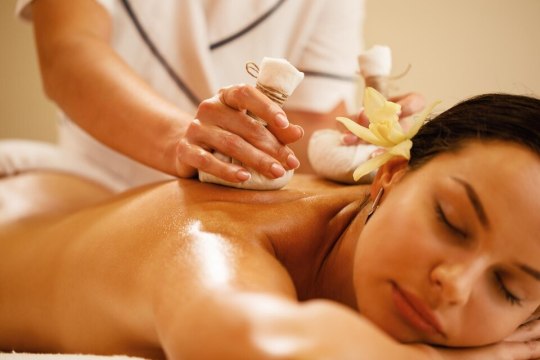
The monsoon season brings refreshing showers, lush greenery, and a sense of rejuvenation. However, as per Ayurveda, the rainy months, particularly Karkidakam in Kerala, can significantly impact our health and immunity. During this time, our body's strength is at its lowest, making it crucial to adopt preventive measures to maintain good health. One such time-honored practice is Ayurvedic cleansing, which helps us pave the path to improved health in Karkidakam. Let's delve into the significance of Ayurvedic cleansing during this season and discover how it can enhance our overall well-being.
Understanding Health in Karkidakam
Karkidakam, the last month of the Malayalam calendar, corresponds to the monsoon season in Kerala. According to Ayurveda, this period is considered to be highly immunosuppressive, making individuals susceptible to various health issues. During this time, the body's digestive fire weakens, leading to the accumulation of toxins (ama). These toxins can disrupt the body's natural balance and weaken the immune system.
Ayurvedic Cleansing: A Nurturing Approach
Ayurvedic cleansing, also known as Panchakarma, is a holistic detoxification process that plays a vital role in maintaining health during Karkidakam. The goal of Panchakarma is to eliminate accumulated toxins from the body and restore harmony to the doshas - Vata, Pitta, and Kapha.
Virechanam: Virechanam involves the therapeutic use of herbal purgatives to cleanse the digestive system and expel toxins. It helps in improving digestion and reducing Pitta-related issues such as acidity and skin disorders.
Vasti: Vasti, or medicated enema therapy, is effective in balancing Vata dosha and cleansing the colon. It aids in the removal of accumulated waste materials and toxins from the body.
Nasyam: Nasyam involves administering medicated oils or herbal formulations through the nasal passage. This procedure helps clear the respiratory system, improve mental clarity, and alleviate Kapha-related problems like sinusitis and congestion.
Abhyanga: Abhyanga is a traditional Ayurvedic oil massage that promotes relaxation, improves blood circulation, and nourishes the skin. It aids in reducing Vata imbalances and supporting overall health.
Snehapana: Snehapana is an internal oleation therapy that involves consuming medicated ghee to lubricate the digestive system and facilitate toxin elimination.
The Benefits of Ayurvedic Cleansing in Karkidakam
Enhanced Immunity: Ayurvedic cleansing boosts the body's natural defense mechanism, making it more resilient to infections and illnesses during Karkidakam.
Improved Digestion: By clearing the digestive tract of toxins and improving digestion, Panchakarma helps in the absorption of nutrients and elimination of waste effectively.
Stress Reduction: The nurturing therapies of Panchakarma help in reducing stress, anxiety, and mental fatigue, promoting mental well-being.
Relief from Seasonal Discomforts: Ayurvedic cleansing can alleviate common monsoon ailments like joint pain, respiratory issues, and skin problems.
As we embrace the monsoon season and the significance of Karkidakam in Ayurveda, it becomes essential to prioritize our health and well-being. Ayurvedic cleansing, through its gentle and holistic approach, offers a path to improved health during this immunosuppressive period. By undergoing Panchakarma therapies and following Ayurvedic guidelines for diet and lifestyle, we can boost our immunity, rejuvenate our bodies, and experience the true essence of the rainy season - a time for renewal and vitality. Let Ayurveda guide you towards a healthier and happier you in Karkidakam and beyond.
Raha Ayurveda is one of the best Ayurvedic hospital in kochi, providing ayurvedic detoxification. Cleansing your body and soul is essential to lead a peaceful and healthy life. Raha Ayurveda's special Karkidakam based detoxification and body cleanse program will help you to stay calm and healthy.
To know more read : Ayurvedic Way of Boosting Health in Karkidakam
0 notes
Text
Know The Benefits Of Panchakarma Treatment
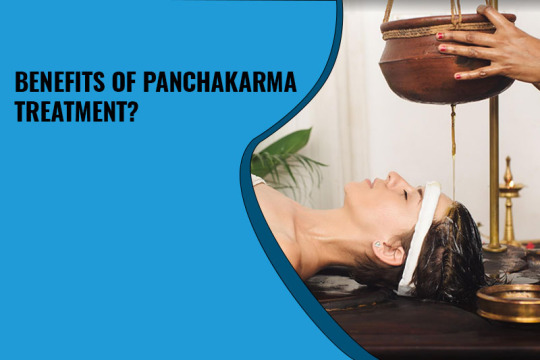
Panchakarma Treatment in Ayurveda defines health as a condition where the body is clear of toxins and organs are functioning normally, the mind is at peace and emotions are calm and happy. In a stressful and toxic environment, our physical and mental systems accumulate toxins causing deterioration in functioning of body-mind complex which opens the door for chronic, degenerative and non-specific diseases to develop. These can evolve into serious specific diseases, ultimately damaging an individual’s health and wellness hlcayush.
Panchakarma is the ultimate Ayurvedic detoxification of body and mind. It also strengthens the immune system to restore health and well-being. It is a compendium of therapies that are highly individualized based on the Ayurvedic constitution type (Prakruty), imbalances (if any), digestive fire, age, immune status, health conditions & many other factors. Depending on an individual’s needs all or part of five therapies are utilized. Panchakarma programme starts with the initial consultation by our physician to determine the individual’s Body-Mind constitution, health condition(s) and appropriate degree of intensity of detoxification required. Based on the initial consultation, one, two or more therapies are prescribed for the day. These therapies are conducted using the constitution specific Ayurveda oils and/or medicines.
Below is the description of variety of therapies used in a Panchakarma programme :
Vamana, induced emesis using Ayurveda medicine or SNEHAPANA, internal oleation therapy
Virechana, purgation induced by Ayurveda medicines
Nasya, Detoxification of upper respiratory tract by administration of Ayurveda drugs in nasal cavity
Basti, Ayurvedic herbal enema to cleanse out toxins from lower colon
Swedana, herbalized individual steam bath
With an Ayurvedic prescribed diet and yoga regimen, Panchakarma reverses the degenerative process and its effects are often profound and long-lasting. With the systematic means of detoxification through ‘Panchakarma‘, it helps in detoxification and rejuvenation, removes impurities, stress and toxins and cleanses the body filled with harmful chemicals and residues. Since it balances the doshas and clears toxins from the entire system, there are numerous benefits of Panchakarma
Helps restore metabolic fire (AGNI)
Eliminates AMA (toxins) strengthens tissue functions.
Assists balance all three doshas.
Helps implement a healthy diet and lifestyle.
Reduces stress, improves relaxation & tolerance.
Slows the ageing process.
Boosts the body’s immunity levels.
Improves strength, endurance and vitality.
Panchakarma Treatment is both preventive for healthy people to maintain and improve excellent cellular function, and curative for those experiencing disease. It is a complex and sophisticated science of purification of the body/mind channel systems, and is therefore best supervised/performed by our qualified Therapist under supervision of the Physician.
A strict diet and lifestyle is to be followed throughout various stages of treatment. This is to bring back the AGNI (Digestive fire) to its normal levels of functioning. Ayurvedic herbal based medicines are administered to rejuvenate the body or to treat the diseases, if any. During different phases of Panchakarma Treatment, these restrictions are to be observed:
Avoid exposure to extreme temperatures, both internally and externally.
Avoid loud noise & stress.
Rest when tired.
Avoid suppression of natural urges such as sneezing, coughing, micturition, bowel movements etc.
Avoid being awake late at night.
Avoid indigestible foods; favour foods that balance the doshas.
Avoid strenuous exercise.
Protect Agni (metabolic fire) with post Panchakarma dietary recommendation (Samsarjana krama), which avoids the formation of Ama (toxins) in the body. Maintaining a healthy daily routine with regular dietary patterns, exercise, sleep and sexual pattern is important to maintain the benefits of the procedure.
Panchakarma Treatment procedures do not produce any serious complications. One may however come across symptoms like headache, body ache, nausea, constipation, bloating, loose motions and emotional imbalance if the guidelines are not followed.
There are certain precautions to be taken during each phase of Panchakarma Treatment procedures by all individuals. One mustn’t practice strenuous activities like travelling, exercising and sexual activities. Avoid intoxicants like tobacco and alcohol, avoid sleeping in the daytime to ensure one sleeps before 10 pm. Food should only be consumed when really hungry and to not fill the stomach completely. Ayurveda may be very complex in character but the effect it has on the human body is incredible. Panchakarma may just be the perfect excuse you need to take some time off from your hectic work life and finally gift yourself the benefits of Panchakarma.
0 notes
Text
Know The Benefits Of Panchakarma Treatment
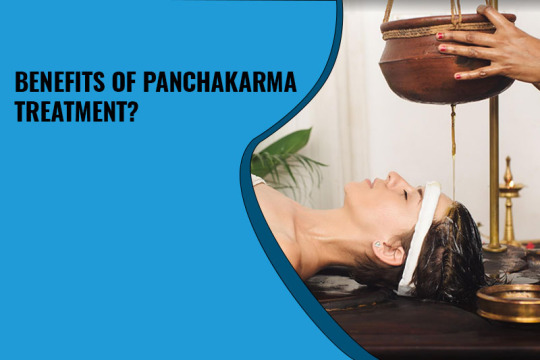
Panchakarma Treatment in Ayurveda defines health as a condition where the body is clear of toxins and organs are functioning normally, the mind is at peace and emotions are calm and happy. In a stressful and toxic environment, our physical and mental systems accumulate toxins causing deterioration in functioning of body-mind complex which opens the door for chronic, degenerative and non-specific diseases to develop. These can evolve into serious specific diseases, ultimately damaging an individual’s health and wellness.
Panchakarma is the ultimate Ayurvedic detoxification of body and mind. It also strengthens the immune system to restore health and well-being. It is a compendium of therapies that are highly individualized based on the Ayurvedic constitution type (Prakruty), imbalances (if any), digestive fire, age, immune status, health conditions & many other factors. Depending on an individual’s needs all or part of five therapies are utilized. Panchakarma programme starts with the initial consultation by our physician to determine the individual’s Body-Mind constitution, health condition(s) and appropriate degree of intensity of detoxification required. Based on the initial consultation, one, two or more therapies are prescribed for the day. These therapies are conducted using the constitution specific Ayurveda oils and/or medicines.
Below is the description of variety of therapies used in a Panchakarma programme :
Vamana, induced emesis using Ayurveda medicine or SNEHAPANA, internal oleation therapy
Virechana, purgation induced by Ayurveda medicines
Nasya, Detoxification of upper respiratory tract by administration of Ayurveda drugs in nasal cavity
Basti, Ayurvedic herbal enema to cleanse out toxins from lower colon
Swedana, herbalized individual steam bath
With an Ayurvedic prescribed diet and yoga regimen, Panchakarma reverses the degenerative process and its effects are often profound and long-lasting. With the systematic means of detoxification through ‘Panchakarma‘, it helps in detoxification and rejuvenation, removes impurities, stress and toxins and cleanses the body filled with harmful chemicals and residues. Since it balances the doshas and clears toxins from the entire system, there are numerous benefits of Panchakarma
0 notes
Photo
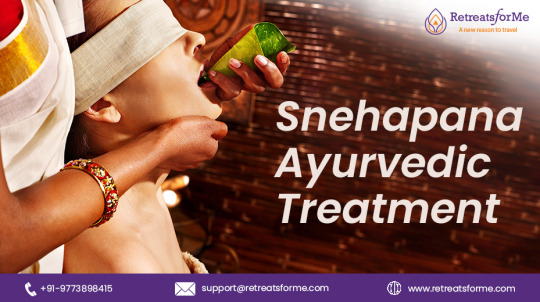
Snehapana (oleation therapy) has a vital role in Ayurveda Treatments
Snehapana uses medicated oils/fats on skin to cleanse the body of toxins. Browse RetreatsForMe for best packages on snehapana ayurvedic treatment in Delhi and book.
0 notes
Photo
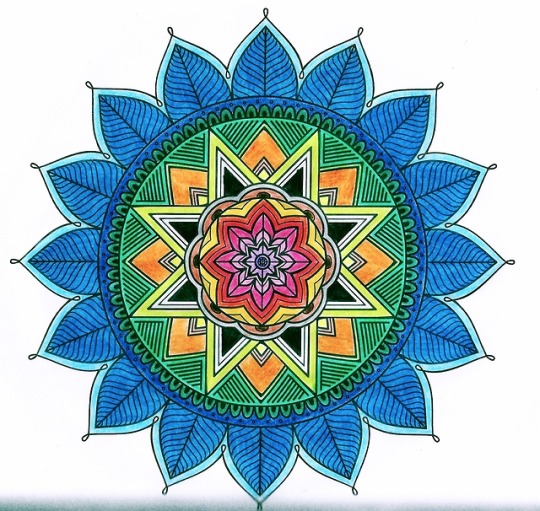




Detox Mandalas
0 notes
Text
An Attempt to Help Re-Build My Gut: Part 2
As I explained my symptoms to the doctor, there was a palpable weight and intensity in his stare. It was as if he was trying to read my mind or see what was going on internally – like he had x-ray vision or something. As I continued to talk about my woes, he grabbed my wrist to check my pulse, and then after about five seconds, he told me that I was weak. In my head I thought, ‘Well, no surprise…
View On WordPress
#Ayurveda#Ayurvedic Treatment#Cleanse#Detox#featured#Gut#Gut Health#Health#Health and Wellness#India#Ramaiah Hospital#Snehapana#Wellness
0 notes
Text
KALYANAKAM GHRUTHAM- Benefits, Ingredients, Indications, Dosage, Usage, Preparation, Side effects, Equivalent Medicines, Research Papers
KALYANAKAM GHRUTHAM- Benefits, Ingredients, Indications, Dosage, Usage, Preparation, Side effects, Equivalent Medicines, Research Papers
Kalyanakam ghrutham is a formulation said in Ashtanga hridaya Unmada chikitsa. It is famous for its action in brain like boosting memory, intelligence etc. This ghee is used in preconceptional treatment to get a healthy progeny. Ghee is generally given to male partner because it improves the quality and quantity of semen. It is used for snehapana (oleation) prior to elimination therapy…
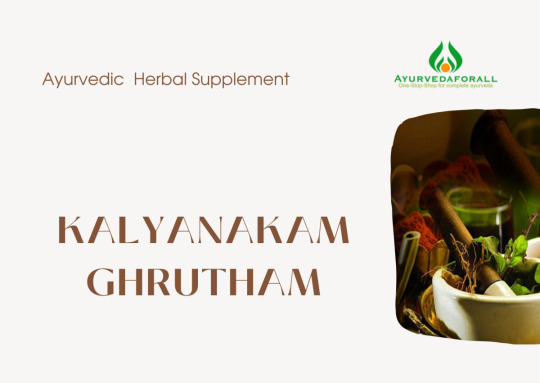
View On WordPress
0 notes
Text
Effective Ayurveda Remedies for Whiplash Injury

Whiplash injuries are a matter of significant concern in today’s fast-paced world, as they can have long-lasting repercussions on an individual’s health and well-being. The sudden and violent motion of the neck during a whiplash incident can lead to a range of symptoms, including neck pain, headaches, dizziness, and even cognitive issues such as memory problems and difficulty concentrating.
These injuries are not limited to any particular age group or demographic; anyone can be susceptible to whiplash under the right circumstances. Additionally, whiplash injuries can often go unnoticed immediately after an accident, as symptoms may not manifest until hours or even days later, making it essential to seek medical attention and diagnosis promptly after any event that might cause whiplash
Causes of Whiplash Injury
Car accidents often cause whiplash because of the sudden head jerking.
Playing sports, like football, can lead to whiplash when there are hard tackles or collisions.
Whiplash can harm different parts of the spine, like bones, nerves, ligaments, and discs, due to accidents.
Whiplash can happen when the spine quickly moves back and forth, tearing as it does.
Sometimes, whiplash can damage the brain, especially when the head is bent too far.
As people get older, their neck joints can wear out, causing pain. This can also happen if bone spurs form as the bones break down.
Conditions like meningitis and rheumatoid arthritis can make your neck hurt too.
Ways to prevent Whiplash injury
Maintain proper posture by keeping your shoulders aligned while sitting or standing. Quit smoking to reduce the risk.
Refrain from carrying heavy bags, as the weight can strain your neck.
Sleep in a comfortable posture with your head and neck aligned with your body. Consider using a small pillow under your neck.
When driving, always wear seat belts and sit upright to enhance safety.
Ayurvedic approach to managing Whiplash Injury
In Ayurveda, the primary cause of injury, known as “Abhigata,” is often attributed to the aggravation of the Vata dosha. When Vata dosha becomes imbalanced, it can result in pain and various other symptoms. Abhigata, in turn, exacerbates Vata dosha, leading to excessive pain and a range of associated symptoms. These symptoms may include restricted neck movement, headaches, dizziness, pain, and tenderness in the upper back and shoulder region, as well as blurred vision, among others.
Ayurveda offers several effective therapies, including Panchakarma treatments, to alleviate the discomfort experienced by patients.
Snehan and Swedan: Snehan involves both external and internal oleation therapies. External oleation therapies may include Snehadhara (the application of medicated oil to the neck region), Abhyanga (oil massage using specific oils), while internal oleation involves Snehapana (ingestion of specific medicated oils) and non-Nithya Snehapana (oral consumption of fats).
Sudation Therapy: This therapy includes Patra Pinda Sweda, which is prepared using certain leaves and combined with external oleation therapy.
Nasya: Nasya involves the instillation of medicated oils and ghee into the nasal passages. Different types of Nasya treatments are administered based on the patient’s condition, such as Masha Tailam, Ksheerabala Thailam, and Brmhana Nasya for chronic and recurring symptoms. In cases of sleep disturbances, Murdini Tail Nasya may be recommended.
Psychological Support: Ayurveda also recognizes the importance of addressing psychological aspects. For patients experiencing depression or memory-related issues, treatments such as Snehan, Virechan, Vasti, and specific Nasya therapies may be recommended.
Ayurclinic Point of View
At Ayurclinic, there is a holistic and patient-centered approach to the treatment of whiplash injuries. Our dedicated team of Ayurvedic doctors understands that whiplash can have a profound impact on an individual’s well-being, both physically and emotionally. Therefore, the treatment strategy is tailored to address not only the physical symptoms but also the emotional and psychological aspects of healing. We begin with a thorough assessment to understand the unique needs of each patient, considering their constitution (Prakriti), current imbalances (Vikriti), and the specific nature of the whiplash injury.
Our treatment care involves a combination of traditional Ayurvedic therapies, including herbal remedies, specialized massages, and personalized dietary and lifestyle recommendations. Throughout the treatment journey, we provide continuous support, monitor progress closely, and make adjustments as necessary to ensure a comprehensive and effective recovery from whiplash injuries.
For more information about Ayurvedic Treatment for Whiplash Injury, you can call us at +61 3 9078 2940 or Book an appointment with us
#ayurveda therapy#ayurvedicmedicine#alternative medicine#ayurveda massage#neck pain#whiplash#ayurveda
0 notes
Text
Ayurvedic treatment for diabetes in India
Ayurvedic treatment for diabetes in India
Ayurveda is an ancient medicine clinic that's very popular in India and emerging in Europe and United States as an complementary and alternative remedy for
chronic illness like Diabetes. Patients with type 2 diabetes may inquire about current complementary and alternative remedies such as Ayurvedic cure for their illness.
Awareness of such traditional herbal modalities is necessary for successful patient counselling and attention.
Type 2 diabetes is a chronic illness which has
significant long-term implications for people suffering from the disease as well as the health-care system as a whole. Modifications in diet, exercise, and
lifestyle are important elements in successful treatment of type 2 diabetes and are integrated into the early Indian medicinal practice of Ayurveda.
Translated from Sanskrit to mean"science of life," Ayurveda joins physical (prakriti), spiritual (purusha), and physiological processes to encourage a healthy
connection between the mind, body, and soul.
The main aim of Ayurveda is to maintain equilibrium between the 5 fundamental components (Panchamahabhutas) of earth,
water, fire, air, and ether or vacuum inside oneself through the concept of the three life forces or doshas.
The doshas consist of vata, which correlates to ether
and air, pitta, which signifies fire, and kapha, which equates to the elements of water and earth.1 Vata, pitta, and kapha are the doshas of the human body,
while rajas, tamas, and satva are the doshas of their brain. According to Ayurveda, striking a balance between the doshas corresponds to great health.
Every living being tends toward particular doshas structurally and physiologically, and such imbalances can cause disease.
Ayurvedic practitioners make use of individualized diet, exercise, and lifestyle as well as procedural, medicinal, and herbal remedies so as to bring their individual's doshas into optimum equilibrium. Each individual enters the clinic with different symptoms, diets, lifestyles, medical issues, support systems, and religious beliefs. Therefore, the treatment strategy is often tailored to these individualized aspects surrounding a patient's lifestyle in order to bring their doshas to a more perfect harmony
The primary drugs utilized in Ayurveda are derived from plants. Popularity of Ayurveda in the United States and Europe grew after Westerners became increasingly aware of the inability to cure specific chronic illnesses while recognizing the side effects of Western drugs. Integrative medicine, which combines Eastern and Western practices, is on the rise with the expectation of rebalancing health and wellness in Western population. Many case reports have demonstrated the use of conventional medicine such as Ayurveda as being beneficial as
well as curative to numerous chronic illnesses including but not limited to arthritis, low back pain, hypertension, hypertension, migraine, neuropathy,
parkinsonism, thyroid imbalances, liver disorder, dysmenorrhea, polycystic ovarian syndrome, irritable bowel syndrome, asthma, allergies, eczema, depression,
stress, and lots of others.
The usage of Ayurveda in type 2 diabetes, a chronic, yet curable disease, has shown marked improvement on individual outcomes in
several case reports. Type 2 diabetes involves a lack of sensitivity to insulin and the subsequent inability of the body to regulate blood glucose levels.
Type 2 diabetes is the most common form of diabetes at the India and mostly results from poor lifestyle choices. According to the American Diabetes Association,
when possible, type 2 diabetes should be treated with diet, exercise, and lifestyle modifications. But progression to oral hypoglycemic agents and insulin will
probably be required at any stage during the course of a patient's disease process as their pancreas is unable to keep up with amount of insulin required to
compensate for the body's resistance to insulin.
Overtime, high blood glucose has major complications, such as damage to the heart, blood vessels, kidneys, eyes,
and peripheral nerves, digestive tract, wound healing capability, and sexual reaction and leads to complications during pregnancy. A small reduction in
hemoglobin A1c (HbA1c) of less than 1% was proven to have a clear association with improved patient health outcomes.
The ancient medicinal practice of Ayurveda, that is rooted in lifestyle and diet, is a promising traditional approach to the treatment of type 2 diabetes.
On account of this large portion of the Indian inhabitants suffering from type 2 diabetes along with the serious complications which result from the illness,
health-care costs resulting from the illness are astronomical. Therefore, the use of Ayurveda in treating type 2 diabetes must benefit more than just people
who are suffering from diabetes.
Udwartana is a powder massage frequently used for slimming and therapy for obesity that can be done daily.
Dhanyamladhara is
frequently utilized in Ayurveda to combat obesity, inflammation, muscular pain, neuropathy, hemiplegia, and rheumatic ailments. During the treatment, your
system is covered with this prep and after that by a heated cloth.
The duration of the treatment is 45 to 50 minutes depending upon the condition of the individual.
Snehapana is a procedure of complete body internal and
external lubrication via drinking ghee and animal fat oil as well as massaging the oil on without any other oral ingestion.
Abhyanga is a hot oil massage.
The oil is often premedicated with herbs for specific ailments.
Bashpasweda is a steam chamber where the individual stays while steam emanates from a boiling
herbal decoction.
Vamana (triggered nausea ) is targeted to expel greater kapha dosha from the body.
Virechana is the second process in the sequence of Panchakarma (Ayurveda Detoxification Program) that involves using plant medicines with a laxative effect, mainly geared toward lowering pitta dosha and toxic accumulation from the gastrointestinal tract, liver, and gallbladder.
Yogavasti is a type of drug given by enema, aiding in diminishing extra vata dosha present in the body. Vata is the force behind the elimination and retention of feces, urine, bile, and other excreta.
Shirodhara is a form of Ayurveda treatment that involves gently pouring liquids over the brow and may be one of the steps involved in Panchakarma.
Diabetes Type 2 management with Ayurveda involves a prescription of diet, lifestyle, chiefly herbal medicines, and systemic cleansing treatments.
Ayurvedic Herbs for Diabetes treatment
Herbs which have demonstrated beneficial for the lowering of glucose levels comprise Coccinia indica, holy basil, fenugreek, Gymnema Sylvestre, Ayush-82, D-400, Cinnamomum tamala, Eugenia jambolana, and Momordica charantia
Traditional Indian medical herbs used for strengthening the body's immune system are proven to have many nutritional and essential elements.
Their surplus or lack may disturb normal biochemical functions of your body. Every herb used in Ayurveda includes another controlling or curative elemental property.
Mechanisms like the arousing or regenerating effect on beta cells or extrapancreatic effects are proposed for its hypoglycemic activity of those ayurvedic
herbs in treatment od diabetes and sugar metabolism. As such, based on the symptoms presented by a patient, an Ayurvedic practitioner can pick the appropriate
therapy.
The best 10 plants used in Ayurvedic treatment for diabetes type 2 in India are:
Bitter melon (M. charantia), Fenugreek, Indian Kino Tree, Gymnema,
Turmeric, Tinospora, Margosa Tree, Holy Fruit Tree, Ivy Guard, and Pomegranate. Each plant helps cure diabetes in various ways.
Water extract of this Indian Kino Tree has been used in treating diabetes as ancient times. With each plant having vastly different properties and each
individual having another manifestation of the doshas, their utilization is different for each patient.
Chromium has been shown to aid in the activity of insulin,
and some studies have demonstrated a nutrient deficiency in diabetic patients Chromium is a component responsible for maintaining normal glucose metabolism and
can be located in the exact same section of the pancreas where insulin is produced. Herbs and plants contain elements which maintain glucose in similar manner
to the way in which insulin regulates blood glucose levels. Therefore, these natural resources have the capability to help in treating type 2 diabetes.
Babbul and seeds of Karranj beej are one of the most helpful in treating diabetes. These 2 veggies have high levels of chromium in them.
Mode of action Ayurveda
drugs in treatment of Diabetes and sugar control (Pancreatic in Addition to Extrapancreatic effects):
Delaying gastric emptying,
slowing carbohydrate
intake,
inhibition of glucose transport,
raising the erythrocyte insulin receptors and peripheral glucose utilization,
increasing glycogen synthesis,
modulating
insulin secretion,
decreasing blood sugar synthesis through melancholy of the enzymes glucose-6-phosphatase, fructose-1, and 6-bisphosphatase,
enhanced glucose
oxidation by the enzyme glucose-6-phosphatase-dehydrogenase pathway
0 notes
Text
Ayurvedic treatment of diabetes in India
Ayurveda is an ancient medicine clinic that's remarkably well known in India and emerging in Europe and United States as an complementary and alternative remedy for chronic illness such as Diabetes. Patients with type 2 diabetes might ask about present complementary and alternative remedies such as Ayurvedic cure for their illness. Awareness of these conventional herbal modalities is vital for successful patient counselling and attention.
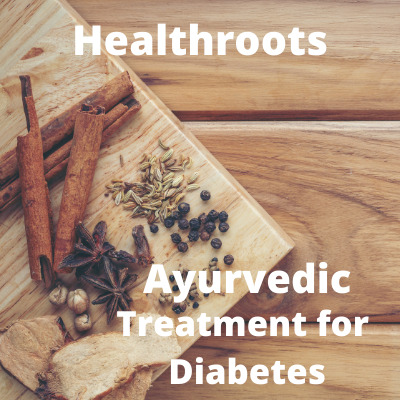
Ayurvedic treatment for diabetes
Type 2 diabetes is a chronic illness which has significant long-term consequences for people afflicted by the illness in addition to the health-care system as a whole. Modifications in exercise, diet, and lifestyle are important elements in effective therapy of type 2 diabetes and are integrated to the early Indian medicinal practice of Ayurveda.
Translated from Sanskrit to mean"science of life," Ayurveda joins physical (prakriti), religious (purusha), and physiological methods to encourage a healthy connection between the brain, body, and soul.
Ayurveda for diabetes
The main aim of Ayurveda is to maintain balance between the 5 fundamental components (Panchamahabhutas) of the earth, fire, water, air, and ether or vacuum cleaner inside oneself through the concept of the three life compels or doshas.
The doshas contain vata, which leads to ether and air, pitta, which signifies fire, and kapha, which equates to the elements of water and earth.1 Vata, pitta, and kapha are the doshas of their human body, whereas rajas, tamas, and satva would be the doshas of their brain. According to Ayurveda, striking a balance between the doshas corresponds to great health.
Every living being tends toward particular doshas structurally and physiologically, and these imbalances can cause illness.
Cosmetic professionals make use of individualized diet, exercise, and lifestyle in addition to procedural, herbal, and herbal remedies so as to bring their individual's doshas into optimum equilibrium. Each individual enters the clinic with various symptoms, diets, lifestyles, medical issues, support systems, and religious beliefs. Therefore, the treatment strategy is often tailored to those individualized aspects surrounding an individual's lifestyle so as to bring their doshas to a more perfect balance
The main drugs utilized in Ayurveda are derived from crops. Popularity of Ayurveda in the USA and Europe climbed after Westerners became aware of the inability to heal specific chronic diseases while recognizing that the unwanted effects of Western drugs. Integrative medicine, that combines Eastern and Western practices, is rising with the expectation of alcoholism wellness and health in Western people. Many case reports have demonstrated using conventional medicine such as Ayurveda as being beneficial as well as therapeutic to numerous chronic ailments such as but not limited to arthritis, low back pain, hypertension, hypertension, migraine, neuropathy, parkinsonism, thyroid ailments, liver disorder, dysmenorrhea, polycystic ovarian syndrome, irritable bowel syndrome, asthma, allergies, eczema, depression, stress, and lots of more.
Ayurvedic treatment for diabetes type 2
The usage of Ayurveda in type 2 diabetes, a chronic, yet curable disease, has shown marked progress on individual results in several case reports. Type 2 diabetes is the most frequent type of diabetes at the India and mostly results in poor lifestyle choices.
But progression to oral hypoglycemic agents and insulin will probably be required at any stage throughout the course of an individual's disease process as their pancreas is not able to
keep up with amount of insulin required to compensate for the body's resistance to insulin.
Overtime, high blood sugar has important complications, such as damage to the heart, blood vessels, kidneys, eyes, and peripheral nerves, digestive tract, wound healing capability, and sexual reaction and contributes to complications during pregnancy. A little decrease in hemoglobin A1c (HbA1c) of less than 1 percent was proven to have a definite association with improved patient health outcomes. The early medicinal practice of Ayurveda, that is frozen in lifestyle and diet, is a promising classic approach to treating type 2 diabetes.
On account of this huge part of the Indian inhabitants suffering from type 2 diabetes along with the severe complications which result from the illness, health-care prices resulting from the disorder are astronomical. Therefore, the usage of Ayurveda in treating type 2 diabetes must gain more than simply people who suffer from diabetes.
Udwartana is a powder massage frequently employed for reducing and therapy for obesity which may be accomplished daily.
Dhanyamladhara is frequently utilized in Ayurveda to fight obesity, inflammation, muscular pain, neuropathy, hemiplegia, and rheumatic ailments.
Throughout the treatment, your system is coated with this prep and after that by a heated fabric. The length of the treatment is 45 to 50 minutes depending on the state of the individual.
Snehapana is a procedure of complete body external and internal lubrication through drinking ghee and animal fat as well as massaging the oil without any other oral ingestion.
Abhyanga is a hot oil massage. The oil is frequently premedicated with herbs for certain ailments.
Bashpasweda is a steam room where the individual stays while steam emanates out of a boiling herbal decoction.
Vamana (triggered nausea ) is targeted to expel greater kapha dosha in the body.
Virechana is the next process in the arrangement of Panchakarma (Ayurveda Detoxification Program) which entails using plant medications with a laxative effect, chiefly geared toward lowering pitta dosha and toxic accumulation from the gastrointestinal tract, liver, and gut.
Yogavasti is a kind of drug provided by enema, helping in decreasing extra vata dosha within the body.
Vata is the force behind the retention and elimination of urine, feces, bile, and other excreta.
Shirodhara is a sort of Ayurveda treatment that involves gently massaging fluids within the brow and may be one of the actions involved with Panchakarma.
Diabetes Type two management with Ayurveda involves a prescription of diet, lifestyle, chiefly herbal medications, and systemic cleansing treatments.

Best ayurvedic treatment for diabetes in India
Traditional Indian health herbs utilized for strengthening the body's immune system are proven to possess many nutritional and essential elements.
Their surplus or lack may disturb normal biochemical functions of your human body. Every herb used in Ayurveda includes another controlling or curative elemental property. Mechanisms like the arousing or regenerating influence on beta cells or extrapancreatic effects are suggested for its hypoglycemic activity of those ayurvedic herbs in therapy od diabetes
and glucose metabolism. Therefore, based upon the symptoms presented by a patient, an Ayurvedic practitioner may pick the proper therapy.
The best 10 plants used in Ayurvedic therapy for diabetes type two in India are:
Each plant helps cure diabetes in various ways. Water extract of this Indian Kino Tree has been used in treating diabetes as early times.
With each plant using vastly different properties and every individual using another manifestation of the doshas, their usage differs for each individual.
Chromium has been shown to assist in the activity of insulin, and a number of studies have shown a nutrient reduction in diabetic patients Chromium is a component responsible for maintaining normal glucose metabolism and can be located in precisely the exact same section of the pancreas where insulin is produced. Herbs and plants contain elements that maintain glucose in similar manner to the manner by which insulin regulates blood sugar levels.
Therefore, these natural resources have the capability to help in treating type 2 diabetes. Babbul and seeds of Karranj beej are one of the most helpful in treating diabetes. These two veggies have high levels of chromium within them.
Mode of activity Ayurveda drugs in treatment of Diabetes and glucose management (Pancreatic in Addition to Extrapancreatic effects):
Alternative and complementary medicines like Ayurveda pose many treatment options for chronic diseases like type 2 diabetes. Having a strong focus on thoughts --human link, nutrition, exercise, lifestyle alterations, and herbal usage, Ayurveda has the ability to genuinely make a massive effect on patients suffering from diabetes in addition to the health-care system.
Many times, chronic illnesses are treated with lifestyle modifications. The integration of Ayurveda system of medicine in diabetes control could be helpful for much better
control of glucose metabolism.
Healthroots established Glycoherb with necessary herbal components which helps control sugar levels naturally.
#ayurveda#treatment for diabetes#ayurvedic treatment#Best ayurvedic treatment for diabetes in India#ayurveda for diabetes#ayurvedic treatment for diabetes#ayurvedic treatment for diabetes type 2
0 notes
Text
Ayurvedic Treatment For Diabetes — Healthroots.in
Ayurveda is an ancient medicine practice that is very popular in India and emerging in Europe and United States as a complementary and alternative treatment for chronic illness like Diabetes. Patients with type 2 diabetes may inquire about current complementary and alternative therapies including Ayurvedic treatment for their disease. Awareness of such traditional herbal modalities is necessary for effective patient counselling and care.
Type 2 diabetes is a chronic illness that has major long-term implications for individuals suffering from the disease as well as the health-care system as a whole. Modifications in diet, exercise, and lifestyle are all important factors in successful treatment of type 2 diabetes and are incorporated into the ancient Indian medicinal practice of Ayurveda.
Originating in ancient India, Ayurveda is a traditional medicinal practice. Translated from Sanskrit to mean “science of life,” Ayurveda connects physical (prakriti), spiritual (purusha), and physiologic processes to promote a healthy relationship between the mind, body, and soul.
The primary goal of Ayurveda is to maintain equilibrium between the 5 basic elements (Panchamahabhutas) of earth, water, fire, air, and ether or vacuum within oneself through the theory of the 3 life forces or doshas.
The doshas consist of vata, which correlates to ether and air, pitta, which represents fire, and kapha, which equates to the elements of earth and water.1 Vata, pitta, and kapha are the doshas of the body, while rajas, tamas, and satva are the doshas of the mind. According to Ayurveda, striking an equilibrium between the doshas corresponds to good health. Each living being has a tendency toward certain doshas structurally and physiologically, and such imbalances may lead to disease.
Ayurvedic practitioners make use of individualized diet, exercise, and lifestyle as well as procedural, medicinal, and herbal prescriptions in order to bring their patient’s doshas into optimal balance. Each patient comes into the clinic with different symptoms, diets, lifestyles, medical complications, support systems, and spiritual beliefs. Thus, the treatment plan is often tailored toward these individualized aspects surrounding a patient’s life in order to bring their doshas into a more perfect harmony
The primary medicines used in Ayurveda are derived from plants. Popularity of Ayurveda in the United States and Europe grew after Westerners became increasingly aware of the inability to cure certain chronic illnesses while recognizing the side effects of Western medications. Integrative medicine, which combines Eastern and Western practices, is on the rise with the hope of rebalancing health and wellness in Western population. Many case reports have shown the use of traditional medicine such as Ayurveda as being beneficial and even curative to a number of chronic illnesses including but not limited to arthritis, low back pain, hypertension, sciatica, migraine, neuropathy, parkinsonism, thyroid imbalances, liver disease, dysmenorrhea, polycystic ovarian syndrome, irritable bowel syndrome, asthma, allergies, eczema, depression, anxiety, and many others.
The use of Ayurveda in type 2 diabetes, a chronic, yet treatable disease, has shown marked improvement on patient outcomes in numerous case reports. Type 2 diabetes involves a lack of sensitivity to insulin and the subsequent inability of the body to regulate blood glucose levels. Type 2 diabetes is the most common form of diabetes in the India and primarily results from unhealthy lifestyle choices. According to the American Diabetes Association, when possible, type 2 diabetes should be treated with exercise, diet, and lifestyle modifications. However, progression to oral hypoglycemic agents and insulin will likely be necessary at some point during the course of a patient’s disease process as their pancreas is unable to keep up with amount of insulin necessary to compensate for the body’s resistance to insulin. Risk factors for type 2 diabetes are widely known and include being overweight or obese, family history of diabetes, lack of physical activity, poor diet, including excessive calorie consumption, low fiber intake, high consumption of saturated and trans fats, high glycemic load, high glycemic index, cigarette smoking, and alcohol consumption.
Overtime, high blood glucose has major complications, including damage to the heart, blood vessels, kidneys, eyes, peripheral nerves, digestive system, wound healing ability, and sexual response and leads to complications during pregnancy. A small reduction in hemoglobin A1c (HbA1c) of less than 1% has been shown to have a clear association with improved patient health outcomes. The ancient medicinal practice of Ayurveda, which is rooted in diet and lifestyle, is a promising traditional approach to the treatment of type 2 diabetes. Due to the large portion of the Indian population suffering from type 2 diabetes and the serious complications that result from the disease, health-care costs resulting from this illness are astronomical. Thus, the use of Ayurveda in treating type 2 diabetes should benefit more than just those who are suffering from diabetes.
Ayurvedic Treatment of Diabetes in India:
Udwartana is a powder massage often used for slimming and treatment of obesity that can be done daily.
Dhanyamladhara is often used in Ayurveda to combat obesity, inflammation, muscular pain, neuropathy, hemiplegia, and rheumatic complaints. It is derived from the word cereals (dhanya) and vinegar (amla). Dhanyamla involves preparation navara rice, horse gram, millet, citrus fruits, and dried ginger. During the treatment, the body is covered with this preparation and then by a heated cloth. The duration of the treatment is 45 to 50 minutes depending upon the condition of the patient.
Snehapana is a process of full body internal and external lubrication via drinking ghee and animal fat oil as well as massaging the oil on without any other oral intake.
Abhyanga is a warm oil massage. The oil is often premedicated with herbs for specific conditions.
Bashpasweda is a steam chamber in which the patient sits while steam emanates from a boiling herbal decoction.
Vamana (induced vomiting) is targeted to expel increased kapha dosha from the body.
Virechana is the second procedure in the sequence of Panchakarma (Ayurveda Detoxification Program) that involves using plant medicines that have a laxative effect, mainly aimed at reducing pitta dosha and toxic accumulation in the gastrointestinal tract, liver, and gallbladder.
Yogavasti is a type of medication given by enema, aiding in diminishing extra vata dosha present in the body. Vata is the force behind the elimination and retention of feces, urine, bile, and other excreta.
Shirodhara is a form of Ayurveda therapy that involves gently pouring liquids over the forehead and can be one of the steps involved in Panchakarma.
Diabetes Type 2 management with Ayurveda entails a prescription of personalized diet, lifestyle, predominantly herbal medicines, and systemic cleansing therapies.
Ayurvedic Herbs for Diabetes
Herbs that have proved beneficial for the lowering of glucose levels include Coccinia indica, holy basil, fenugreek, Gymnema Sylvestre, Ayush-82, D-400, Cinnamomum tamala, Eugenia jambolana, and Momordica charantia.
Traditional Indian medical herbs used for strengthening the body’s immune system are known to have many essential and nutritional elements. Their excess or deficiency may disturb normal biochemical functions of the body. Each herb used in Ayurveda has a different dominating or therapeutic elemental property. Mechanisms such as the stimulating or regenerating effect on beta cells or extrapancreatic effects are proposed for the hypoglycemic action of these ayurvedic herbs in treatment od diabetes and sugar metabolism. As such, depending on the symptoms presented by a patient, an Ayurvedic practitioner can select the appropriate treatment. For treatment of type 2 diabetes, the herbs M. charantia, Pterocarpus marsupium, and Trigonella foenum greacum have been proven most successful.
The top 10 plants used in Ayurvedic treatment of type 2 diabetes in India are:
Bitter melon (M. charantia), Fenugreek, Indian Kino Tree, Gymnema, Turmeric, Tinospora, Margosa Tree, Holy Fruit Tree, Ivy Guard, and Pomegranate. Each plant helps treat diabetes in different ways. For example, studies have shown bitter melon reduces polyuria, which partially prevents renal hypertrophy, while also reducing urinary albumin excretion. Water extract of the Indian Kino Tree has been used in treating diabetes since ancient times. With each plant having vastly different properties and each person having a different manifestation of the doshas, their utilization is different for each patient.
Role of chromium in Ayurvedic management of diabetes in India:
Chromium has been shown to aid in the action of insulin, and some studies have demonstrated a chromium deficiency in diabetic patients Chromium is an element responsible for maintaining normal glucose metabolism and is found in the same area of the pancreas where insulin is produced. Plants and herbs contain elements which maintain glucose metabolism in similar fashion to the way in which insulin regulates blood glucose levels. As such, these natural resources have the ability to assist in treating type 2 diabetes. Babbul and seeds of Karranj beej are among the most beneficial in the treatment of diabetes. These 2 fruits have high levels of chromium in them.
Mode of action Ayurveda medications in treatment of Diabetes and sugar control (Pancreatic as well as Extrapancreatic effects):
delaying gastric emptying,
slowing carbohydrate absorption,
inhibition of glucose transport,
increasing the erythrocyte insulin receptors and peripheral glucose utilization,
increasing glycogen synthesis,
modulating insulin secretion,
decreasing blood glucose synthesis through depression of the enzymes glucose-6-phosphatase, fructose-1, and 6-bisphosphatase,
enhanced glucose oxidation by the enzyme glucose-6-phosphatase-dehydrogenase pathway
Alternative and complementary medicines such as Ayurveda present many treatment options for chronic illnesses such as type 2 diabetes. With a strong focus on mind–body connection, nutrition, exercise, lifestyle modifications, and herbal use, Ayurveda has the power to truly make a large impact on patients suffering from diabetes as well as the health-care system. Often, chronic conditions are best treated with lifestyle modifications. Ayurveda seeks to eliminate the use of pharmaceutical agents by practicing a holistic approach to medicine and managing chronic conditions. The integration of Ayurveda system of medicine in diabetes management may be helpful for better control of sugar metabolism.
0 notes